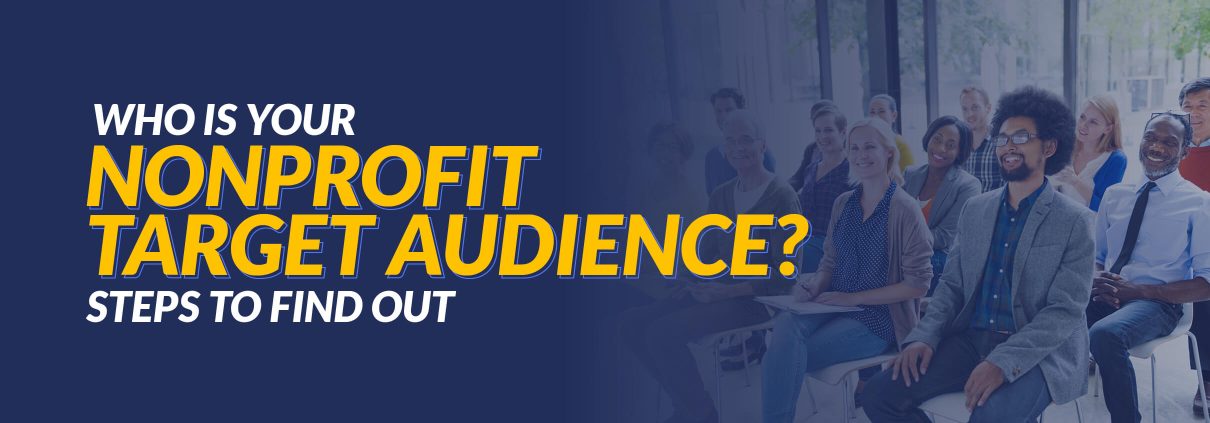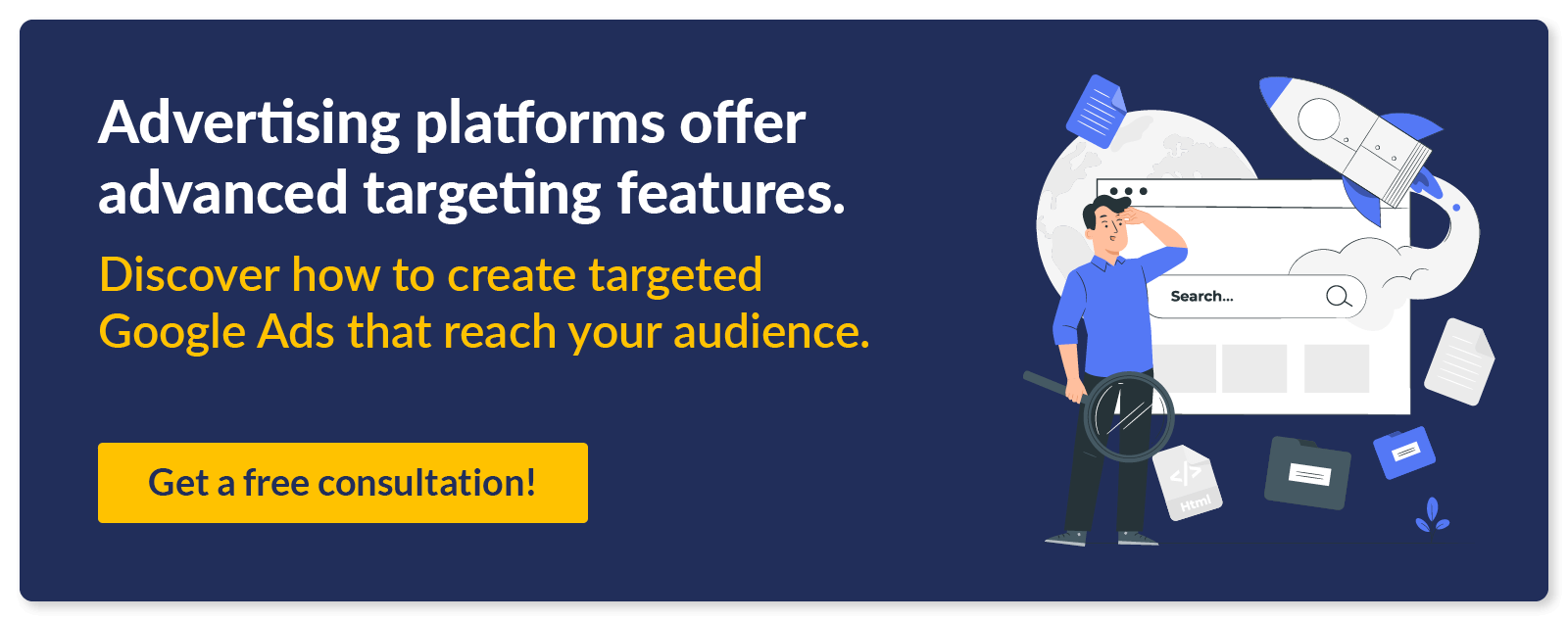Who Is Your Nonprofit Target Audience? Steps To Find Out
When you post on social media or publish an article on your website, do you know who your nonprofit is speaking to? If you’re unsure, your marketing efforts might not be resonating with people. Identifying your nonprofit target audience allows you to craft messages that inspire action and speak directly to your donors, volunteers, beneficiaries, and anyone else who plays a role in your mission.
Delivering your messages to the right people boosts engagement, increases your marketing efforts’ ROI, and ultimately amplifies your impact. But how do you find these individuals? And more importantly, how can you use that knowledge to create more meaningful outreach?
To answer these questions, we’ll cover the following topics:
- What Is a Nonprofit Target Audience?
- Why Understanding Your Nonprofit Audience Is Important
- Steps To Define Your Nonprofit’s Target Audience
- How To Engage Your Nonprofit Audience
- How Often To Reevaluate Your Nonprofit Target Audiences
Before diving into specific strategies, let’s start with the basics of what a nonprofit target audience is and why defining yours matters.
What Is a Nonprofit Target Audience?
A nonprofit target audience refers to the specific groups of people that a nonprofit seeks to engage in order to fulfill its mission. These groups commonly include donors, volunteers, corporate partners, beneficiaries, and advocates. Each audience member plays a crucial role in supporting the nonprofit’s goals, whether by funding the organization, offering their time, raising awareness, or benefiting from the organization’s work.
Shared characteristics that unify different nonprofit target audiences include:
- Demographics: Age, gender, income, occupation, etc.
- Location: Urban vs. rural, local, national, or global
- Interests and values: Causes and beliefs they care about
- Needs and challenges: Problems your nonprofit seeks to solve
- Engagement: Previous involvement as donors, volunteers, or advocates
- Communication preferences: Channels like email, social media, events, or Google
Knowing these details, you can create target audience persona, a fictional representation of one of your typical audience members. Your audience personas are an essential part of your marketing plan. For example, creating a persona for your target audience of volunteers might reveal that your typical volunteers are young professionals in their 20s and 30s who live in urban areas. Your research may tell you that these individuals are socially conscious, seeking meaningful ways to give back to their communities while building their personal networks and enhancing their leadership skills.
Why Understanding Your Nonprofit Audience is Important
When you understand who your audience is, your marketing becomes more focused, effective, and impactful. Instead of trying to reach everyone, you can speak directly to the people most likely to support your cause, whether they’re donors, volunteers, or advocates. In turn, your communication will build stronger connections, engage supporters, and inspire action.
Here’s a breakdown of the key benefits of understanding your nonprofit’s audience:
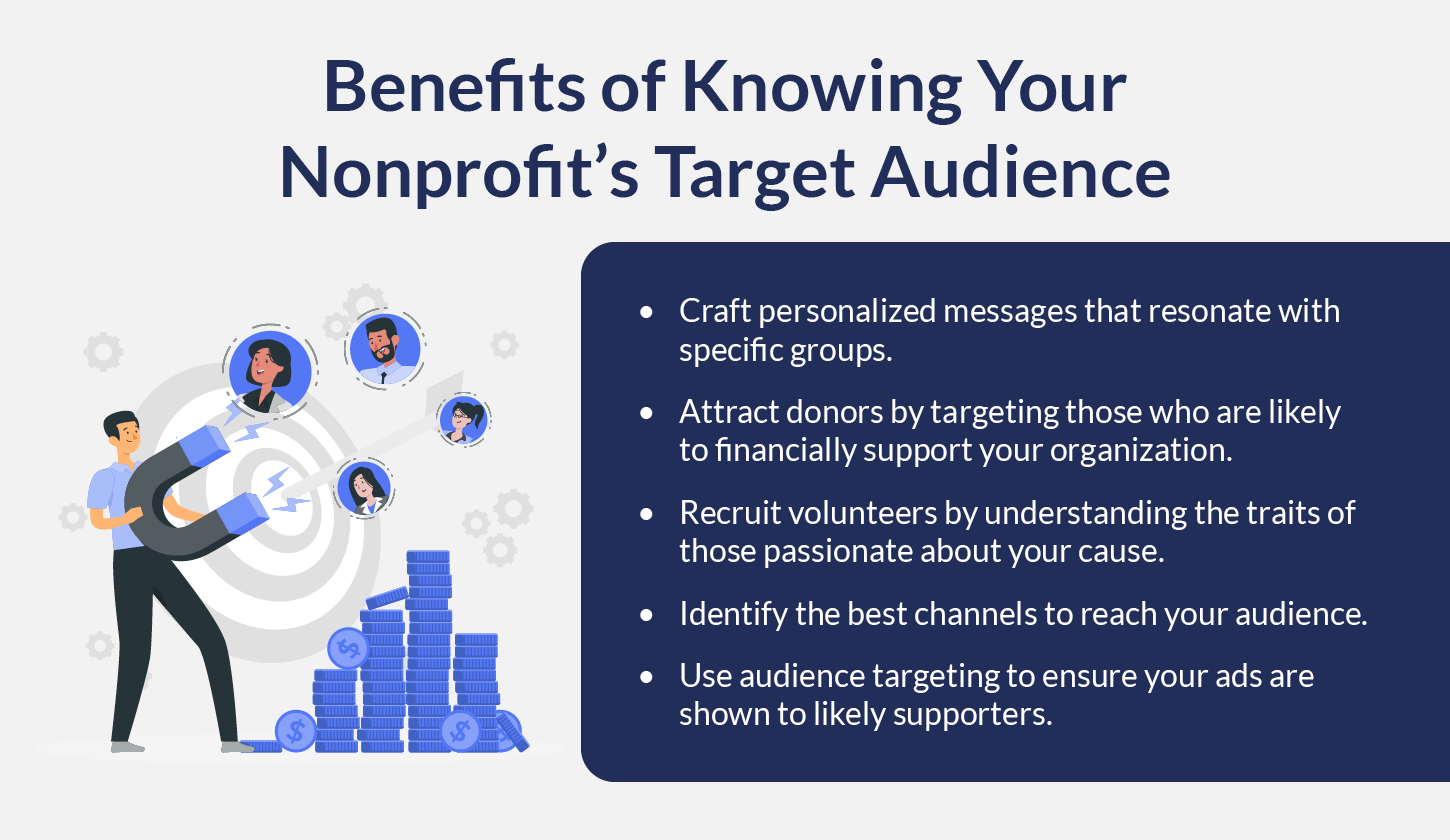
- Personalized communication: You can craft messages that resonate with specific groups, leading to deeper connections and higher engagement. After all, 40% of donors are more likely to give when they experience personalized outreach.
- Increased donations: You’ll be able to target individuals who are more likely to support your mission, boosting fundraising efforts and attracting more donors. Of the donors who are more likely to give after personalized outreach, nearly 10% would actually increase their donations by over 50% if they received regular updates about their impact.
- More effective volunteer recruitment: Understanding common traits of your volunteers helps you attract other likely volunteers who are passionate about your cause.
- Improved engagement across channels: Knowing your audience allows you to identify the best platforms to reach them, whether through social media, email, or paid ads (like Google Ads).
- Effective ad targeting: You can use audience targeting to ensure your organization’s paid ads are shown to the people most likely to take action, increasing your return on investment.
Essentially, knowing who you’re crafting messages for takes the guesswork out of marketing. For instance, if your target audience for donations consists of people in their 20s to 40s who are passionate about environmental conservation and sustainable living, your messaging should align with their values.
These individuals may be well-educated, socially conscious, and committed to causes that protect the planet for future generations. They’re likely involved in local eco-friendly initiatives, and they support organizations focused on clean energy, reducing plastic waste, or protecting endangered species. For this audience, your messaging should emphasize the tangible environmental impact of donations, sustainability, and building a legacy for future generations. You might use channels like Instagram, TikTok, emails, texts, and digital ads to reach them.
Steps To Define Your Nonprofit’s Target Audience
Follow these steps to refine your outreach and make meaningful connections:
1. Identify Your Goals.
Start by identifying what you want to achieve. Your goals should push your mission forward in some way. Are you looking to increase donations, attract more volunteers, or grow attendance for your events?
Let’s say your goal is to find young adults to mentor at-risk youth. You’ll need to focus on audiences who are passionate about community involvement and youth empowerment.
You’re not limited to one target audience either. You can have two or even three goals and a different target audience for each one.
2. Analyze Existing Data.
Use your CRM to see who currently supports your nonprofit. Your tools should enable segmentation, allowing you to break your existing nonprofit audience down by demographics, past engagement, donation size, giving frequency, and preferred communication channels. This helps identify patterns and key characteristics within your current base.
You might segment your audience into groups of donors, volunteers, or customers for your revenue-generating services:
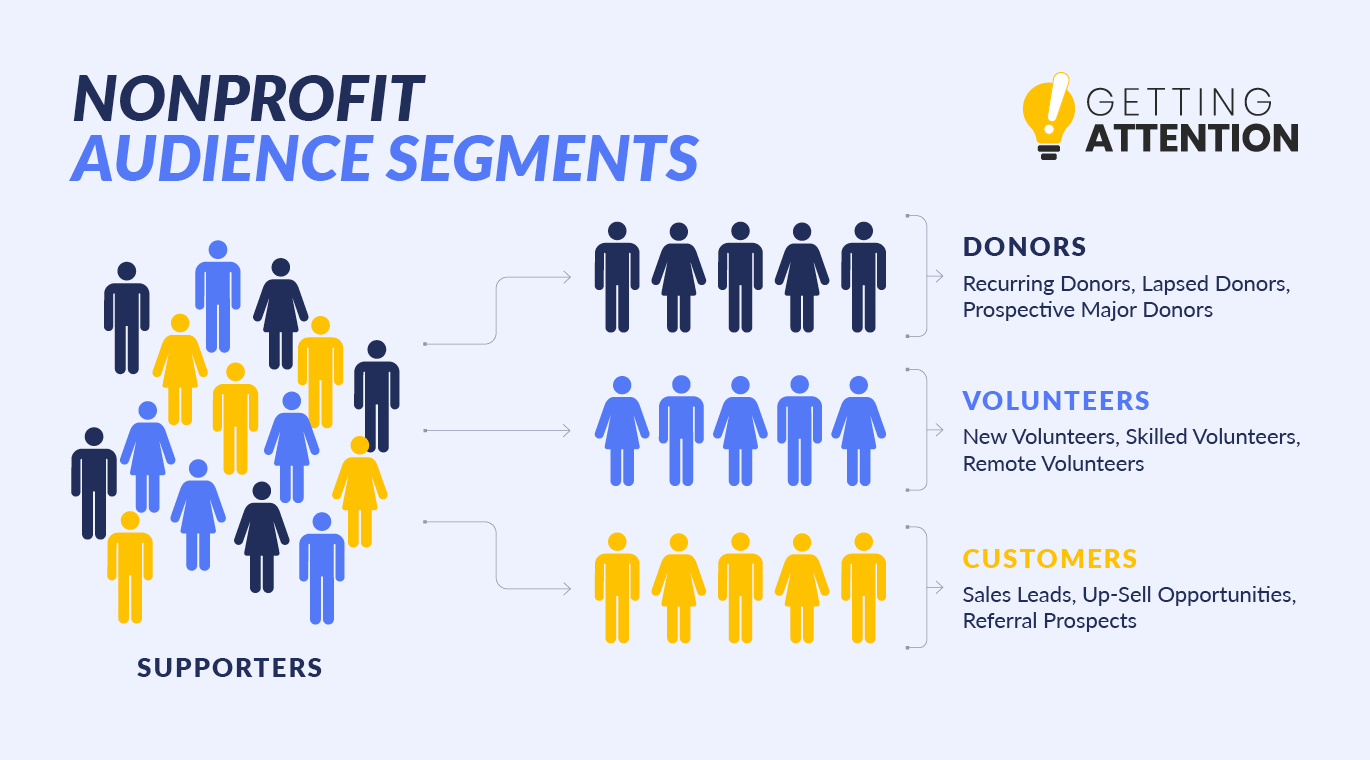
Then, break those groups down further based on shared characteristics. If you notice a large segment of millennial donors who donate to youth programs and prefer social media outreach, tailor messaging to donors in that group. Then, publish on Facebook and Instagram since those are the most-used social platforms by millennials, according to Target Internet.
3. Look At Your Competition.
One of the best ways to define your nonprofit’s target audience is by observing how similar organizations are targeting theirs. While you can’t access their internal data, you can analyze their public materials to gather useful insights:
- Browse their website. Look at the language and content they use. Who do they seem to be speaking to—families, young adults, or professionals?
- Analyze their ads. Pay attention to their Google Ads, Facebook Ads, and any other paid campaigns. What demographics are they targeting, and how are they positioning their messaging?
- Explore their social media pages. Who’s engaging with their posts, and what types of content generate the most response?
- Sign up for their emails. What kinds of stories and programs are they promoting?
By gathering insights from competitors, you can identify patterns that work well and avoid ineffective tactics. Any positive insights will strengthen your audience-targeting efforts, and your analysis may reveal gaps in their outreach.
4. Start Conversations With Current Supporters.
Direct feedback from your existing supporters can provide valuable insights. Conduct surveys, interviews, or focus groups to better understand why they support your nonprofit and what matters most to them. You can even chat at your next fundraising event or volunteer opportunity. This will help in identifying similar audiences and making your messages more impactful.
5. Develop Audience Personas.
After all this research, create audience personas. These personas represent your ideal supporters, and you might have a few different ones to represent groups like donors, volunteers, advocates, and corporate partners.
Your personas should include demographics, interests, personalities, lifestyles, goals of supporting your nonprofit, and barriers your organization can help them overcome. You can even give this data a name to make it seem more realistic.
Here’s an example of a volunteer persona for an environmental organization:

Name: Erin Matthews
Age: 35
Education: Bachelor’s Degree in Communications
Occupation: Marketing Manager
Interests: Environmental conservation, sustainable living, and outdoor activities like hiking
Lifestyle: Suburban mom balancing family time and eco-conscious choices
Personality: Passionate, strong sense of responsibility toward the environment, seeks transparency in organizations she supports, and cares deeply about making a difference
Goals: Support environmental causes to ensure a sustainable future for her children
Barriers: Needs to see how her contributions make a difference and prefers family-friendly, hands-on volunteer opportunities
Communication Preferences: Emails, text messages, Instagram, and Facebook
With this hypothetical supporter profile, your nonprofit can craft stronger messages by highlighting tangible impacts that align with Erin’s environmental goals, such as the number of trees planted or wildlife habitats restored. Messaging should emphasize family-friendly volunteer opportunities that allow her to engage with her children, making her feel that her contributions are both meaningful and aligned with her eco-conscious, family-focused lifestyle. Additionally, personalized updates will reinforce her direct impact, keeping her engaged long-term.
How To Engage Your Nonprofit Audience
Once you know who your nonprofit target audiences are and how those groups prefer to engage with your organization, put that information to use. Understanding their preferences, interests, and demographics will allow for more impactful messages.
Try these strategies:
- Personalize communication channels. Different segments of your audience prefer different communication methods. For example, younger supporters might engage more with digital channels like social media, while older donors might prefer email updates or direct mail. Use what you know about your audience to select the right channels for each group, ensuring that your message reaches them where they’re most likely to engage. After all, segmented digital campaigns produce up to 760% more revenue compared to non-segmented campaigns.
- Customize messaging based on audience insights. Your messaging should speak to your nonprofit audience’s values and motivations. For instance, the Literacy Empower Foundation ran a Google Ad campaign that targeted keywords like “free books for kids” to reach parents and educators searching for resources. The ad effectively targets its audience by highlighting both the urgency (“limited quantity”) and the organization’s long-standing impact, while offering valuable resources to its specific audience (free books for kids):
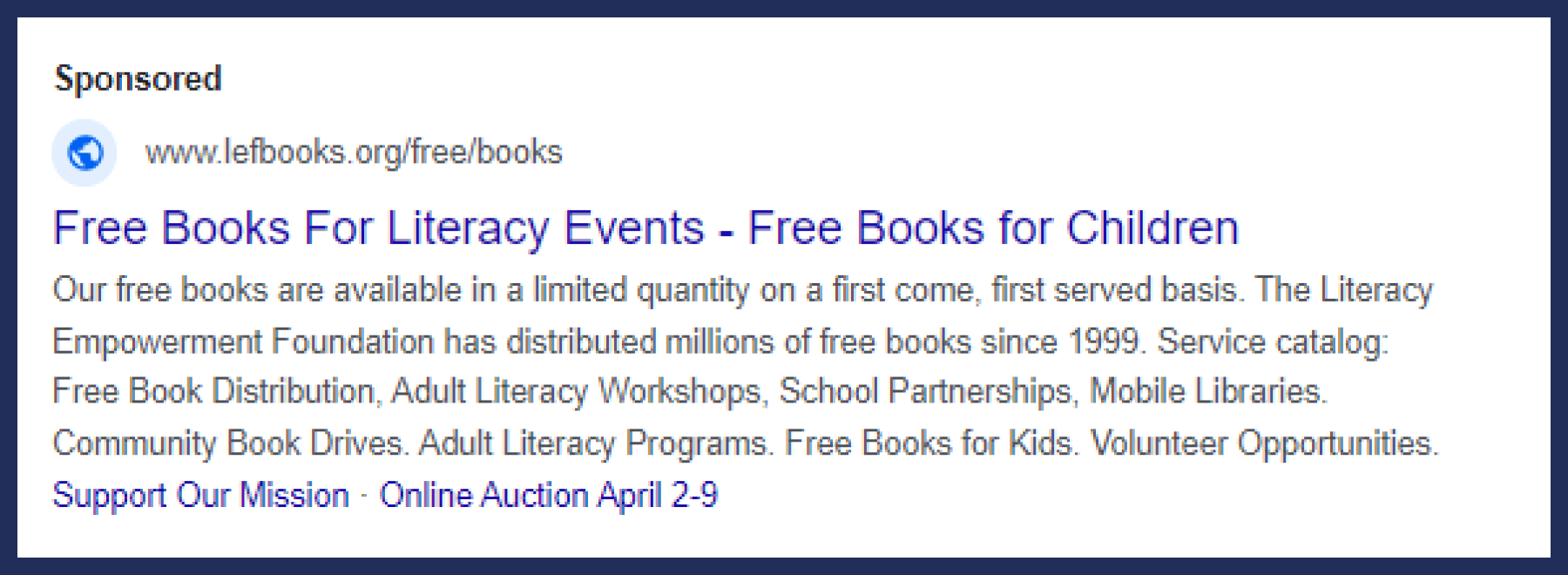
Digital paid channels also provide advanced audience targeting features. For instance, Google Ads allows you to target users based on location, interests, demographics, and online behaviors. You can also use remarketing to show tailored ads to users who have already visited your website or a specific webpage.
How Often To Reevaluate Your Nonprofit Target Audiences
Reevaluate your nonprofit’s target audiences after every campaign. This allows you to adapt future outreach to shifts in audience behavior. Use tools and ongoing strategies such as:
- A/B testing: Compare two versions of your messages or campaigns to see which drives results. This strategy involves changing one element, such as your CTA button language or your email subject line, for two separate groups of your audience. You can use A/B testing on your donation form, volunteer registration page, emails, texts, or anything other materials.
- Social listening: Monitor social media platforms to track mentions, comments, and discussions about your organization or cause. This tells you how supporters are discussing your campaigns, so you can identify trends, learn what resonates most with your community, and respond quickly to questions or feedback.
- Audience Surveys: Directly ask your nonprofit audience what they think and feel about your organization. Ask for feedback on messaging, donation processes, event experiences, and overall engagement.
While post-campaign reviews are essential, conduct a more comprehensive evaluation quarterly or annually to account for broader trends.
Next Steps and Helpful Resources
Knowing your nonprofit target audience is essential for fostering meaningful connections and ensuring sustainable support. By tailoring outreach to your audience’s unique needs and interests, you’ll inspire them to support your work and do more for your cause.
Start by identifying your marketing goals and taking a look at who currently supports your work. As you move forward, listen to supporters’ feedback, pay attention to your campaigns, and make changes when needed. This ongoing evaluation will help you respond to your audience’s evolving needs and strengthen your connection with them.
For more insights and helpful resources to support your efforts, check out these resources:
- How to Apply for Google Grants: Get Approved in 4 Easy Steps. Your nonprofit might be eligible to run free Google Ads. This platform offers incredible targeting features, so you can effectively reach your nonprofit target audience. Learn if you’re eligible and how to apply.
- Creating Meaningful Messages: Copywriting For Nonprofits. Discover how to craft inspirational messages to your nonprofit’s audience. This guide covers different types of copywriting and strategies for taking your messaging up a notch.
- Prospect Research Guide: Everything Nonprofits Need to Know. Still unsure how to determine who your target audience for donations is? Check out this prospect research guide to learn about helpful tools and strategies for researching donors.
